- WordPress.org
- Documentation
- Learn WordPress
- Members Newsfeed

How to Set Up a Homework Club

Homework clubs can be a fantastic way for students to get together, help each other, and stay motivated to complete their school assignments. If you’re considering setting up a homework club, here are some steps to guide you through the process.
Define the Purpose and Goals
Before you start a homework club, it’s important to determine why you’re starting it and what you hope to achieve. Do you want to provide a quiet space for individual study, or are you aiming for collaborative learning where students help each other? Setting clear goals will help guide the structure of your club.
Choose a Location
A suitable location is critical. This place should be quiet, have enough space, and be easily accessible to students. Libraries, community centers, or empty classrooms are excellent places as they provide a formal atmosphere conducive to studying.
Set a Schedule
Decide on the days and times that the homework club will meet. It’s important to consider when students are most likely to attend — after school or in the evening. Be consistent with the timing so that students can build it into their routine.
Gather Materials
Make sure you have all the materials necessary for effective studying: textbooks, reference books, stationary supplies like pens and paper, computers with internet access if possible, printer/scanner facilities, etc.
Establish Rules and Structure
Creating a set of rules helps to maintain order and focus within the group. For instance, settle on rules regarding noise levels, toy usage during club time (like phones), or bringing snacks. Additionally, decide how the time will be structured—whether there’ll be a quick briefing at the start of each session or if students break off into groups.
Recruit Members
You’ll need to promote your homework club to gather members. You can do this by creating flyers and posters to advertise around your school or local community centers. You could also use social media or word-of-mouth to get the word out there.
Find Supervision
Having an adult supervisor like a teacher or parent can help oversee the club activities. This person can provide homework help if needed or mediate any disruptions that arise during study time.
Secure Funding if Necessary
If you require funds for materials or snacks, look into potential sponsorships from local businesses or educational grants available in your area that support after-school programs.
Monitor Progress and Solicit Feedback
It’s important to keep track of how well the homework club is meeting its intended goals. Ask for regular feedback from members and adjust your strategies accordingly. This ensures that the club remains effective and continues to meet student needs.
With careful planning and management, a homework club can be an invaluable resource that fosters community support among students as they work towards academic success.
Related Articles

In the realm of education, fostering a positive learning environment is paramount…

Mindfulness has become an essential part of many people's lives and is…

Sustainability is a crucial topic for today's youth, as they are the…

Pedagogue is a social media network where educators can learn and grow. It's a safe space where they can share advice, strategies, tools, hacks, resources, etc., and work together to improve their teaching skills and the academic performance of the students in their charge.
If you want to collaborate with educators from around the globe, facilitate remote learning, etc., sign up for a free account today and start making connections.
Pedagogue is Free Now, and Free Forever!
- New? Start Here
- Frequently Asked Questions
- Privacy Policy
- Terms of Service
- Registration
Don't you have an account? Register Now! it's really simple and you can start enjoying all the benefits!
We just sent you an Email. Please Open it up to activate your account.
I allow this website to collect and store submitted data.
- Create new account
- Reset your password
Register and get FREE resources and activities
Ready to unlock all our resources?
Why a homework club could work for your child

What is a homework club?
Homework clubs offer a place for your child to work in a supportive environment out of school hours.
Why choose a homework club?
Some children are so self-motivated that they’re able to work diligently on homework and ignore the distractions of normal family life, but not everyone finds it so easy.

Boost Your Child's English & Maths!
- Weekly programme for each school year
- Worksheets sent direct to your inbox
- Keeps your child's learning on track
Doing homework requires a quiet space to work at home and support from you. If your job or other children make it tricky to provide those things you might want to consider the option of a homework club.
Who runs homework clubs?
Schools and many public libraries offer them, usually after school finishes for the day. Check what’s available with your school and local authority. The biggest advantage of a school-based homework club is that it’s on the same premises, so children don’t have to travel to the club. Familiarity with teachers is also a plus point, and your child is in an environment where they are already relaxed.
If your child would prefer a change of location at the end of the school day a library homework club might be the answer. They usually run from 4pm to 6.30pm and sometimes for a few hours on a Saturday morning. “We find that children start getting more homework from the age of nine onwards so our clubs are of most benefit for eight to 14-year-olds,” says Lucy Love, manager for children and young people at libraries run by Enfield Council. “Under-eights can come to the club but a parent or carer must be with them.”
What benefits do clubs offer?
“The great thing about library homework clubs are the homework centre assistants – while they don’t do the child’s work, they have the knowledge and experience to guide them to the relevant books or online resources such as encyclopaedias,” explains Lucy. “We encourage children to use online data, as it’s usually the most up-to-date, and can offer equipment such as protractors and SATs papers. Homework clubs are also a great way of helping the child’s transition to secondary school.”
What to do after homework club
- When you get home, ask your child to explain what their homework is – this will show you they have understood it properly themselves.
- Help your child to settle down and concentrate by making sure there are no distractions around them when they go over their homework with you.
- Encourage your child to check their work to reinforce the learning they have done.

Give your child a headstart
- FREE articles & expert information
- FREE resources & activities
- FREE homework help
More like this
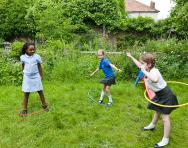
- PRO Courses Guides New Tech Help Pro Expert Videos About wikiHow Pro Upgrade Sign In
- EDIT Edit this Article
- EXPLORE Tech Help Pro About Us Random Article Quizzes Request a New Article Community Dashboard This Or That Game Popular Categories Arts and Entertainment Artwork Books Movies Computers and Electronics Computers Phone Skills Technology Hacks Health Men's Health Mental Health Women's Health Relationships Dating Love Relationship Issues Hobbies and Crafts Crafts Drawing Games Education & Communication Communication Skills Personal Development Studying Personal Care and Style Fashion Hair Care Personal Hygiene Youth Personal Care School Stuff Dating All Categories Arts and Entertainment Finance and Business Home and Garden Relationship Quizzes Cars & Other Vehicles Food and Entertaining Personal Care and Style Sports and Fitness Computers and Electronics Health Pets and Animals Travel Education & Communication Hobbies and Crafts Philosophy and Religion Work World Family Life Holidays and Traditions Relationships Youth
- Browse Articles
- Learn Something New
- Quizzes Hot
- This Or That Game New
- Train Your Brain
- Explore More
- Support wikiHow
- About wikiHow
- Log in / Sign up
- School Stuff
How to Start an Afterschool Program
Last Updated: September 20, 2023 References
This article was co-authored by wikiHow Staff . Our trained team of editors and researchers validate articles for accuracy and comprehensiveness. wikiHow's Content Management Team carefully monitors the work from our editorial staff to ensure that each article is backed by trusted research and meets our high quality standards. There are 12 references cited in this article, which can be found at the bottom of the page. This article has been viewed 79,320 times. Learn more...
Afterschool programs can help meet your community’s needs. [1] X Research source Some are academically-focused on building skills like reading, math, and language. Others may highlight outdoor play, art, sports, or music. To set up an afterschool program, consider where you will run it, what staff you’ll need, and where you’ll find funding for supplies and food. Any program that cares for young children may also have to comply with national and local government guidelines.
Researching and Planning

- If you’re a teacher, consider whether your students could benefit from an extended-day program.
- If you’re a parent or community leader, think about a childcare solution close to home where the kids in your neighborhood can safely spend a few hours.
- If you’re a student yourself, consider proposing a program that provides a unique opportunity for yourself and your peers.

- Involve the people who will use the program from the beginning so you can build it to meet their needs.

- For example, some afterschool programs simply provide an environment that is safe and comfortable, where kids can play and hang out with adult supervision while their parents work.
- Other programs set educational goals to improve reading skills or math scores for students who are struggling academically.

- If you’re setting up a program at a school that already has other afterschool programs in place, model your organization around these.
- Ask for volunteers from the community to help you meet your staffing needs.

- It is possible to run a program outdoors, but you will also need to make sure students have access to restrooms, shade, and adequate protection from weather extremes (like heat, cold, rain, etc.)
- Try to choose a space that is accessible and inclusive for students regardless of their ability.

- In other countries with more centralized educational programming, check your government’s website for a section on childcare and education. For example, in the UK, visit https://www.gov.uk/after-school-holiday-club .
- Reach out to the contacts listed for your state or local agencies by email and phone to discuss the specific requirements for your program.
Funding Your Program

- When setting your tuition cost, consider the needs of the community your program serves. If the fees are too high, you may not be able to reach to the population you want to help. [8] X Research source

- For example, if you need funds to purchase arts and crafts supplies, you can look into the Arts Learning Program of the National Endowment for the Arts. [10] X Research source
- There are also numerous Federal and state funding programs in the U.S. that specifically fund programming in Science, Technology, Engineering, and Mathematics. [11] X Research source

- Material donations like crafts and food from local businesses can help reduce your financial burden.
- Community funding agencies are often helpful in providing much-needed money for overhead costs like rent and maintenance.

Implementing the Program

- Set-up stations for students like an arts and crafts station, a building station, a games station, and a reading station. This allows students to choose between a variety of different options within an organized structure. [15] X Research source

- Ask parents and students about any food allergies your students may have before offering snacks.
- Fruits, like apples, whole grains crackers, and protein, like cheese, nuts, or hummus, are great options.
- Avoid foods that are high in sugar as these cause an initial spike in energy levels, followed by a steep decline.

- By allowing them to participate in this way, you’ll help create a stronger sense of community and belonging in your students

- For example, one theme you could explore might be “spring.” Your arts and crafts activities could revolve around making flower and gardening-themed projects. You might offer building activities that include making birdhouses or terrariums. You can learn songs, games, and dances related to the seasonal change, as well.
Expert Q&A
You might also like.

- ↑ https://youth.gov/youth-topics/afterschool-programs/benefits-youth-families-and-communities
- ↑ https://www.thirteen.org/edonline/concept2class/afterschool/exploration_sub3.html
- ↑ https://www.thirteen.org/edonline/concept2class/afterschool/exploration.html
- ↑ http://www.njsacc.org/pdfs/imagine.pdf
- ↑ https://www.wallacefoundation.org/knowledge-center/Documents/The-Cost-of-Quality-of-Out-of-School-Time-Programs.pdf
- ↑ http://www.afterschoolalliance.org/fundingForum1.cfm
- ↑ https://youth.gov/youth-topics/afterschool-programs/starting-and-operating-afterschool-program
- ↑ http://www.afterschoolalliance.org/stemfunding.cfm
- ↑ https://www.thirteen.org/edonline/concept2class/afterschool/implementation.html
- ↑ http://www.sedl.org/afterschool/practitioners_guide_to_afterschool_programs.pdf
- ↑ https://www.thirteen.org/edonline/concept2class/afterschool/implementation.html#asbs
About This Article

- Send fan mail to authors
Reader Success Stories
Aug 12, 2023
Did this article help you?

Featured Articles

Trending Articles

Watch Articles

- Terms of Use
- Privacy Policy
- Do Not Sell or Share My Info
- Not Selling Info
wikiHow Tech Help Pro:
Level up your tech skills and stay ahead of the curve
So you want to start a homework club… How to set up and run homework clubs (2007)
The term “homework club” generally refers to an after-school program where tutors offer homework and reading support for a group of students on a regular basis. Frontier College, a national literacy organization, has been organizing such programs in every part of Canada since 1984 and this guide is based upon the knowledge gained through that experience.
The author notes that no two programs will be exactly alike. Tutors may work one-on-one with students or with a small group of students, or the homework club may have a “drop in” structure. Homework clubs can take place during the school day, after school, in the evening, or on the weekend.
The guide includes advice on selecting an organizing team; deciding on a structure for the club; registering students; recruiting and training tutors; and ensuring the sustainability of the program.
Appendices contain samples of forms, letters, agendas, and contracts that can be adapted to suit the needs of individual programs.
Recent resources
- Jobs in Canada: Where, What and For Whom?
- Literacy Changes Lives: What's the value of lifelong learning? Meet Brett, Gideon and Chris [Video - 1:56]
- Literacy Changes Lives: Meet Michael Moore [Video - 1:35]
- The Five E's for Health: Understanding eLiteracies for eLearning in Electronic Educational Environments
- Literacy Changes Lives: Meet Chris [Video - 1:12]
Popular resources
- Sector Council Essential Skills Initiatives - Case Studies
- Decimals, Fractions & Percent Part 1 - Practice [Video - 7:30]
- Living on an Income Rollercoaster
- What Works! A Summer Institute on Employment Issues for Literacy Practitioners
- Report on the Survey on Workforce Requirements and Skills
- Skip to main content
Stellar Teaching Co.
Engaging Resources for Teaching Literacy
By Sara Marye Leave a Comment
Book Clubs in the Classroom: 5 Tips for Success
Does anyone else struggle with setting up book clubs in the classroom?
On the surface, a book club always sounds like a great idea! But, (if you’re like me), you may have fallen into the trap of pushing back the date that you actually start book clubs in the classroom with your students, because you can’t seem to find the time to prep all of the things that you feel like you need to have ready to ensure that your students’ book clubs are successful.
The truth is, book clubs are for the students, and they do not need to have months of prep work behind them. If you have found yourself spinning your wheels trying to get everything organized enough to simply start book clubs, then I have 5 tips for you today that will help you get your classroom book clubs up and running this week!

What is a student-led book club?
Book clubs, formally known as a literature circles in many places, are a shared reading experience among a small group of students. The goal is that the students are facilitating the discussion, rather than the teacher leading the group, as you would see in a traditional small group.
Students meet according to a set schedule, and practice the reading skills you have been teaching them through their own text-based discussion. It’s another way to incorporate independent skill practice into your reading block!
How will book clubs in the classroom help my students?
Book clubs in the classroom are one of the most authentic reading experiences you can give your students. Reading a book, and engaging in discussion with peers over that book is exactly how we approach reading as adults. Additionally, positive book club experiences in elementary school can encourage students to continue reading as they get older.
The more positive reading moments we can curate in our classrooms, the better job we are doing of creating lifelong readers, which is our ultimate goal!

5 Ways to Get Book Clubs in the Classroom Up and Running
Have a clear agenda/routine for each book club.
There is no wrong way to do a book club. You may have internalized the idea that you need to have dozens of jobs set up and taught before you can officially place students in a book club. There is nothing inherently wrong with incorporating different roles into your students’ book clubs, but if this has been holding you back from getting started,
I want you to know that jobs are not necessary for book club success! The real key to hosting well-run book clubs is to have a clear agenda. Students thrive when things are consistent and predictable. Explicitly stating what should be done during book club, and for how long, gives your students the parameters they need to be successful, while also keeping things loose enough for their discussion to be their own.
Some items that a book club agenda may include:
Summarize yesterday’s reading: 5 minutes.
Share connections: 3 minutes.
Discuss predictions: 5 minutes.
Ask questions: 2 minutes
…or whatever you want to include!

Introduce Your Book Club Structure in Whole Group
This was a lifesaver for me. If you have created a routine that will be the same for book clubs, no matter which students are in it, and regardless of the text that is being read, then you can teach the routine one time to everyone. Put students in their groups during your typical book club time, but read one text to everyone aloud. Then, have students practice the discussion routine you created in their small groups over the text you read them.
This allows you to circulate and give feedback to the discussion of different groups, without having to hold 4-6 different texts in your head. Establishing the routine well on the front end will be a lifesaver for you as you release the responsibility to your students in the future.

Use Picture Books as Your Book Club Text
This is not as common, especially in upper elementary, but I am a big believer in using picture books as a teaching tool across all grades…even in book clubs! There are no rules that state that book clubs have to last for weeks at a time, or that they have to use chapter books.
If the purpose of a book club is for students to have a shared reading experiences, then any text will do! Using picture books can be a great way to further establish the routine of small group discussion with shorter texts.

You can use picture books in a few different ways:
Introduce a handful of picture books to your students, and let them choose which book club they would like to be a part of.
Pull several picture books by the same author, and create author study book clubs.
Pull several picture books that are the same genre, and host genre study book clubs!
Let Students Choose their Texts
This raises plenty of concern for teachers everywhere, and I understand it. We want to make sure that our students are reading texts at an appropriate level, that they are on task, and (most importantly), that they are learning through book clubs in the classroom. But, offering choice is such a powerful tool in our teaching. If you are hesitant to allow students to choose their book club texts, I’d like to offer a couple of points for consideration.
Choice is an automatic engagement-booster. When students choose, they are inherently more invested in the task at hand. Assigning a text that a student has no interest in, simply because it’s the right lexile level for them, will not promote engagement in the reading, which won’t help your students grow.
Engagement in a task promotes grit. If the text is a tiny bit harder than you may have chosen for the student yourself, the fact that they chose it can be enough to encourage them to work harder to comprehend than they may have if the book were handed to them.
Positive reading experiences produce more reading experiences. Forcing a student into a group they didn’t want can have the opposite effect of what we’re looking for in our book clubs. If a text is a little too easy, or a little too hard, but the student desperately wanted to see what would happen, and they were enjoying learning from the other students in the group, then they will be more apt to pick up a book in their free time.
Create 5-6 different book clubs, and allow students to sign up for the one they prefer. Yes, some of your students’ may end up in groups with their very best friends. But again, this mirrors real life, and we are trying to create authentic reading experiences! If you are worried about off-task behavior between friends, I’d encourage you to make sure that your routine is clear and tight to eliminate space for off-task discussions.
Another option you can consider is letting your students select their book club right before or after an extended break. We all know how antsy students can get right before a holiday break. And as teachers we are looking for all the help we can get during those crazy weeks. Giving students the chance to select their own book club can be just one simple way you boost engagement right before the holidays .

Check out these resources!

Minimize and Simplify Book Club Homework
The traditional book club routine is for students to both read and complete several discussion questions independently. I don’t recommend that you pile on the homework, because (again) we want to create a shared, positive reading experience for our students!
Instead, I recommend allowing your students to decide as a group how many chapter they would like to have read each week, and then creating a one-size-fits-all assignment for each group to complete before each book club meeting.
For example, you could ask students to come to each book club prepared to discuss:
Three comments
Two connections
One question that you had
An assignment like this can be written on any kind of paper, so no copies are necessary, and puts the responsibility on your students’ shoulders, rather than creating an extra task your weekly to-do list!

Your time is better spent teaching than facilitating, after all.
These 5 tips will help your students run their own book clubs in the classroom, and allow you to truly sit back and observe. Instead of running the book clubs yourself, you can spend time providing feedback to your students that will deepen their discussion, and help them grow as readers!!
Extra F. A.Q’s About Book Clubs in the Classroom
How often should I have book clubs running?
There is no magic number here…you get to decide! You can have them run for one month, each quarter. Or, maybe you have students rotating through book clubs for the entire second semester.
One thing I would consider is if your students are also in guided reading groups, are you providing enough space for them to balance all of their assignments and hold all of those texts in their heads?
Do I have to read the book before my students?
Best practice tells us, yes; we should know exactly what a text is about before we assign it to our students. But, reading every book in its entirety may not be feasible. So, if you don’t have time to read a book to completion, at least make sure that you have done some research to ensure that inappropriate themes are not present in the book and that you’ve read a few chapters to familiarize yourself with the complexity of the vocabulary!
Should I assign roles for each student in the book club?
There are pros and cons to roles! There is a lot of structure added when you incorporate student jobs into book clubs. So, if structure and keeping students busy the entire time is the most important thing to you, then you may want to use specific jobs. However, some of the cons may be that you are not creating as authentic of a reading experience as you may have wanted. When adults discuss books with their peers, they aren’t looking only for their questions, or only for their connections. They are looking at the text as a whole.
Another con is that roles create extra prep work for the teacher. The teaching on the front end needs to be more in-depth to cement all of the different routines for the different jobs, and often different roles require different types of writing assignments, which may mean more copies.
At the end of the day, it’s just about your preference and teaching style! I hope you enjoy book clubs in the classroom.
Happy Teaching!
Want to learn more about how to get started with book clubs in the classroom?
Check out this episode of Stellar Teacher TV where I share some of my best tips for getting started with book clubs.
Sentence Writing Routine Free Sample
If your students struggle to write at the sentence level, this new literacy routine is going to be your new best friend. Each day of the week your students will engage in a quick (yet effective) sentence writing task that will help them become more confident and creative writers. Say goodbye to fragments and boring sentences, and say hello to complex sentences with lots of details!

Want Even More?
You’ll love these related posts!
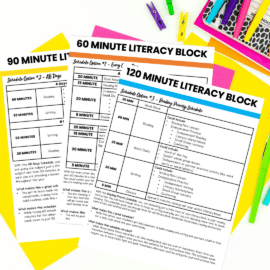
Reader Interactions
Leave a comment cancel reply.
You must be logged in to post a comment.
Grab Your FREE Gift!
Word Of The Day: Context Clue Routine
With this freebie, you'll get everything you need to get started with word of the day in your classroom. You'll get all the student and teacher materials for five days. Word of the day will help your students become experts at using context clues.
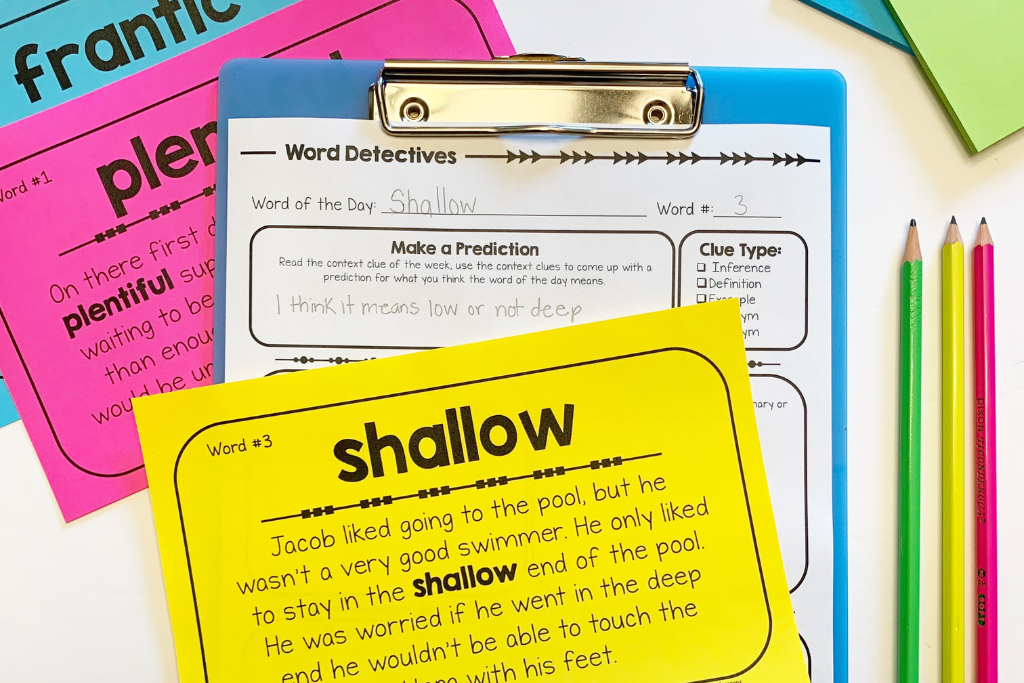
Stellar Teacher Podcast
SUBSCRIBE & LISTEN HERE

Don’t Let Grammar Be the Star of Your Writing Block! Do This Instead

It’s Test Prep Season: Here Are 4 Ways to Make It More FUN!

Plan Authentic and Accessible Writing Experiences for Your Students With Katie Novak

How Do I Keep My Students Independent & Engaged While I Pull Small Groups?

Free private podcast!
The Confident Writer System Series
In less than 90 minutes, you'll learn quick and easy ways that will transform your upper elementary student's writing.
Join our membership!
The Stellar Literacy Collective
You didn’t become a teacher to spend your rare free time scrolling Pinterest and searching on Google. Trust me friend, I have been there. That’s why this membership was created. When you join, you receive countless pre-planned resources without sacrificing engagement, rigor, and effectiveness. That means less planning and more teaching. Beyond the resources, you’ll gain a community of like-minded teachers. Are you ready to level up your instruction and maybe even find a new teacher bestie?
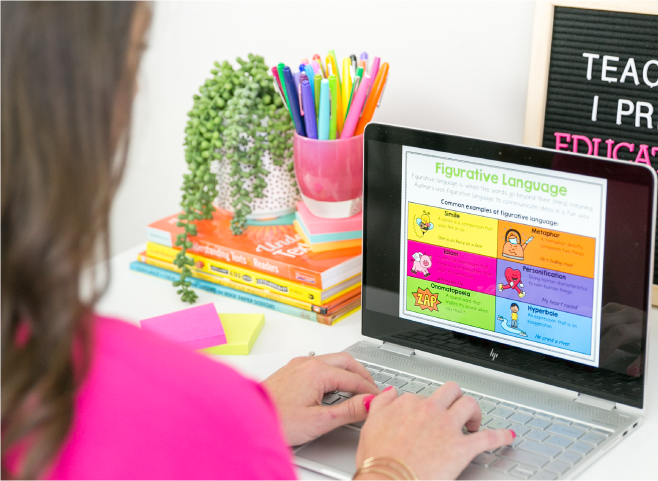
Follow Me Here
I’m Sara, your literacy lovin’ mentor and cheerleader.
With over a decade of experience working as a classroom teacher and school administrator, I understand the joys and challenges of teaching. That’s why I’m on a mission to make an impact by serving stellar upper elementary teachers just like you. Get ready, because I’m pulling out all the stops to ensure that you have the tools and confidence you need to build a literacy block that you’re proud of. One that excites you and your students while also meeting the standards. Oh yes, it’s totally possible to have both!
Homework Club - Homework Management and Reward Set

Description
Need to motivate your students to turn in homework on time? Want to reward those that consistently do? Create a Homework Club board with this set that will motivate your students to turn in all their homework on time for a month!
This set includes all of the following:
- 7 different colored Homework Board options
- directions on how to set up your Homework Club board
- Homework Club awards
- 9 different Homework Club Reward Passes and a blank version to create your own
- 36 x 11 Homework Club Hall of Fame banners in each of the 7 colors
- charts for each month to display the members of the Homework Club under the Hall of Fame banner
- Homework Club name tags to write on or an editable PowerPoint version
❤️ TEACHERS LIKE YOU ARE LOVING THIS HOMEWORK CLUB SET! ❤️
⭐⭐⭐⭐⭐ Lisa P. said, "Really a great way to track homework---- have had our monthly homework party based on those whose names had to be moved out of the club....I do believe that next months party will have more members! Great visual and easy for a student to do as a job."
⭐⭐⭐⭐⭐ Noggin Prep said, "This is a wonderful product. I have a group of kids who were not motivated by anything I was doing to turn their HW in. Once I started the HW club though they became excited about the reward at the end of the term! Thanks for a great resource!"
⭐⭐⭐⭐⭐ Kerrie M. said, "I have wanted an organized system to reward my scholars who consistently have their homework completed and turned in on time. This product is it! It is very simple to implement. My scholars are excited to earn rewards and I have had more success with homework completion this year than in the past. I am very happy with this purchase and will continue to use this resource in the future."
✅ Don't forget to leave feedback to earn credits for future purchases!
How to get TPT credit to use on future purchases:
• Please go to your My Purchases page (you may need to login). Beside each purchase you'll see a Provide Feedback button. Simply click it and you will be taken to a page where you can give a quick rating and leave a comment for the product. Each time you give feedback, TPT gives you feedback credits that you use to lower the cost of your future purchases. I value your feedback greatly as it helps me determine which products are most valuable for your classroom so I can create more for you. ☺
Copyright ©️ - Stephanie Rye - Forever in Fifth Grade
Permission to copy for single classroom only.
Please purchase additional licenses if you would like to share this product.
*****************************************************************************
Questions & Answers
Stephanie rye-forever in fifth grade.
- We're hiring
- Help & FAQ
- Privacy policy
- Student privacy
- Terms of service
- Tell us what you think
Homework Club
We’d like to introduce you to BUA’s new Homework Club/BU Tutors program!
Similar to the POSH ( p roctored o pen s tudy h all) of the past, each Monday-Thursday , in SAO Room 251 (Arts Wing), from 3:30-5:30pm , BU Tutors will be available to:
- Provide a quiet space for studying/homework,
- Help with specific subject-related questions (see link with introduction to tutors and specific subject expertise), and/or
- Support students in homework/assignment completion.

- Knowledgebase
How to set up a homework task for a year group
There may be times when it is necessary to create homework tasks for an entire year group. Class Charts allows you to do this via the homework module and year group classes.
Setting up year group classes
If you are a school admin and would like to enable year group classes in your school’s Class Charts account, please contact us .
Once we have set up year group classes on your behalf, they will appear on the Classes tab to all users with the Admin permission.
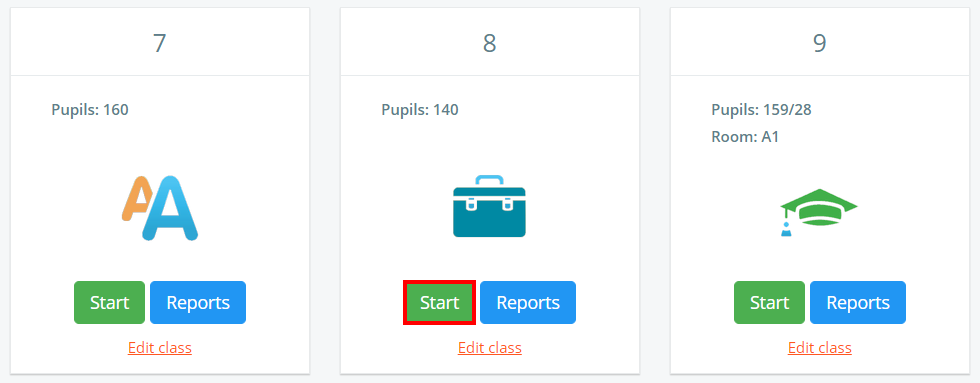
If you are not a school admin user, you can still access a year group class by clicking on the Cover class button.

Select the year group class of your choice and click on the OK button.

Setting up a homework task
Once you have entered the year group class, you will be able to set a homework task for the entire year group.
To do this, follow the steps provided in the following knowledgebase article .

Arts Education
- Planning & Assessment
- Classroom Management
- Job Applications & Interviews
- Newly Qualified Teachers
- Student Teachers
- Literacy Resources
- Numeracy Resources
- Gaeilge Resources
- Arts Education Resources
- S.P.H.E. Resources
- S.E.S.E. Resources
- P.E. Resources
- Planning & Assessment Resources
- Classroom Management Resources
- Job Applications & Interview Resources
- N.Q.T. Resources
- Student Teacher Resources
- SEN Resources
- Tips & Tricks Resources
- FAQ’s
- Members Area
After School Activities/Clubs
A follower was looking for some ideas for after school activities/ clubs that they could set up in their school, so here are a few ideas; if you have any more comment below and I’ll add them to the list.
Art club/craft club – the children can do arts/crafts after school- they could work on individual projects/pieces or a collaborative piece.
Grúpa Trad – a group of children that play instruments and come together to play traditional music together. (It usually works better if children attend lessons outside of school too!) The grúpa could play at mass/gatherings throughout the year.
Tin whistle club – this was a new club we set up in our school this year. Some teachers teach tin whistle to their classes so their parents wanted them to continue with tin whistle this year. It’s a good instrument to teach – especially to a large group and theres tons of good books available with a step by step guide. I completed the CPD College training two summers ago and really enjoyed it!
Choir – children can sing together. They could learn popular songs, songs from musicals/movies, hymns, folk songs etc. Here are some suggestions. The children could perform at school events/ school mass etc.
Drama club – this could be drama games, confidence building activities, co-operative games or the children could put on a play/drama.
This can be dependent on what facilities are available. Is there a school hall? Is there a yard/astro turf/ courts/ fields to use? What will happen when the weather is bad? What equipment is available? Is there enough balls? Is there a pump (if the balls are flat)? Is there enough supervision – child to teacher ratio?
Basketball, football, gaelic football, hurling, camogie, tennis, badminton or a sports camp with different sports/games could also be an option.
Reading club – the children could read the same book together and discuss what they like/dislike or what they think might happen next or the children could bring their favourite book and give a review on why they like it.
Writing club – children could write stories, poems, songs and share them with the group and get advice/support from the teacher. There are lots of different writing competitions such as Write a Book that the children could be involved with.
Debating club – lots of motions from Seomra Ranga here . Children could compete against different schools in the surrounding area. (Information here from Concern )
Maths club – children with a particular interest in maths can work on tricky maths problems/ brain teasers and problem solving.
Chess club – children can learn how to play chess. There is a chess workshop for teachers being run in Blackrock Education Centre over the next few weeks. Further information here .
Quiz team – many organisations such as the Credit Union organise quizzes for primary pupils. Usually information is sent to schools about these quizzes.
Homework club – children can complete their homework with teachers to support them if needed.
Gaeilge – children could do oral language activities/sport/music/ baking through Irish.
Cookery/Baking club – children could learn to bake/cook.
Lego – children
I think if you have a particular interest/talent in something and want to set up an after school/lunch time club then go for it! Initially organise it for 4-6 weeks (up until a mid-term) and then you can decide if there is enough interest to continue.
Share this story, choose your platform, related posts.

Tips and advice for job sharing

Permanent teaching jobs in Ireland

School Tour Recommendations from Teachers
Advertisement
How to start a book club: Tips and reading suggestions
Copy the code below to embed the wbur audio player on your site.
<iframe width="100%" height="124" scrolling="no" frameborder="no" src="https://player.wbur.org/hereandnow/2024/03/25/how-to-start-book-club"></iframe>
- Emiko Tamagawa

Starting a book club may seem daunting, from choosing which books to read to keeping meetings regular and on track.
But Traci Thomas , creator of “The Stacks” podcast, says that discussing a book helps readers get more out of the story.
“Regardless of what you thought of it, regardless of what they thought, just hearing different opinions, different insights on characters or writing style, or even what happened,” she says.
Tips for starting and maintaining a book club
1. Aim for no more than 12 people at the beginning. And remember, not everyone will make it to every meeting.
2. For larger groups or virtual meetings, don’t be afraid to call on people to share so everyone has a chance to contribute.
“A lot of the most interesting and thoughtful opinions do come from people who are kind of quiet and sitting in the back and don't want to say anything,” Thomas says.
3. To select books, either let the group vote each time or allow each person to choose a book once. Or combine the two ideas: When it’s a member’s turn to pick, they select three books and the group votes on those options.
“That way, you know for sure you're going to be excited when it's your month, but also everyone's going to be excited,” she says.
4. Set your expectations early. Decide whether it’s mandatory to finish the book to attend the meeting, or if it’s OK for members who haven’t read the book to still join in.
“I personally think that people who don't finish the book should certainly be able to come to book club because sometimes they have insight,” Thomas says. “Book club isn't really always about the details of the plot. It's usually about themes and ideas. If you haven't finished you can still have thoughts about those kinds of things.”
5. Designate a ‘boss’ for each meeting, and change who that person is often. Whether it’s the person hosting the meeting or the one who selected the book, the ‘boss’ leads the discussion and brings questions to the group to start conversations.
6. Be open to whims of conversation leading places you may not have expected. Members making connections to their personal lives or to other works may spur insightful, exciting conversations.
“I have a great moment in our book club. We read ‘A Mercy’ by Toni Morrison, which is a super challenging novel,” Thomas says. “All of a sudden one of the women in the book club brought up this topic about the Bible, and then I started riffing, and then someone else started riffing. And by the time we finished, we were like, ‘Oh my God. We cracked the entire novel. I'm getting chills thinking about it right now. I was so excited. It was such a thrilling experience.”
Book club recommendations
- " You Made a Fool of Death with Your Beauty " by Akwaeke Emezi
- " Monsters " by Claire Dederer
- " Passing " by Nella Larsen
- " Romeo and Juliet " by William Shakespeare
- " True Biz " by Sara Novic
- " Prison by Any Other Name " by Maya Schenwar and Victoria Law
- " The Trees " by Percival Everett
- " The Best We Could Do " by Thi Bui
- " The Office of Historical Corrections " by Danielle Evans
- " Beloved " by Toni Morrison
- " Breathe " by Imani Perry
- " Never Let Me Go " by Kazuo Ishiguro
- " The Light of the World " by Elizabeth Alexander
- " Exit West " by Mohsin Hamid
Emiko Tamagawa produced and edited this interview for broadcast with Todd Mundt . Grace Griffin adapted it for the web.
This segment aired on March 25, 2024.

Scott Tong Co-Host, Here & Now Scott Tong joined Here & Now as a co-host in July 2021 after spending 16 years at Marketplace as Shanghai bureau chief and senior correspondent.

Emiko Tamagawa Senior Producer, Here & Now Emiko Tamagawa produces arts and culture segments for Here & Now.
More from Here & Now

IMAGES
VIDEO
COMMENTS
Seek out help and support from your principal, teaching colleagues, parents and school community. Here are a few tips to get you started: Decide who - Start small. Identify a small group of students who need support with completing homework. Follow the protocol for contacting parents and obtaining their permission.
This workbook is designed to help the organizing team of your homework club steer through the many decisions that need to be made before you set up your club. Take the time as a group to discuss each topic. At the end of each section there is a space for the team to make notes about your decisions. Homework clubs do not become successful by ...
Monitor Progress and Solicit Feedback. It's important to keep track of how well the homework club is meeting its intended goals. Ask for regular feedback from members and adjust your strategies accordingly. This ensures that the club remains effective and continues to meet student needs. With careful planning and management, a homework club ...
The first step in starting a successful club is to identify and create a list of prospective students who would join and be able to positively impact the group. I recommend starting with 10 or 12 students as this number will go down as the semester progresses. Capture students' attention by creating a homework icon and mission statement to ...
Homework is a hot topic. It can be time-consuming for both students and teachers. Find out how homework clubs can help.
The biggest advantage of a school-based homework club is that it's on the same premises, so children don't have to travel to the club. Familiarity with teachers is also a plus point, and your child is in an environment where they are already relaxed. If your child would prefer a change of location at the end of the school day a library ...
Managing and Organizing the Homework Environment. The key goal of Managing and Organizing the Homework Environment is to create a "space for success" by setting up the physical environment, providing supplies, and managing daily schedules in ways that support program goals and help students learn. Watch as students work individually, with ...
Marie from Think Big project Homework Club offers advice on how to set up your own Homework Club.
Frontier College has developed resources to support Ontario's student success strategy. This workbook has been written to help student success Leaders plan and make decisions in order to set up a volunteer-based homework club. The Appendices contain samples of forms, letters, agendas, contracts and other organizational paperwork.
Teach Starter offers a range of time-saving, educational teaching resources for primary school teachers. Download unit and lesson plans, educational posters, classroom games and activities, worksheets and more!
Teams at Bennet Middle School in Manchester, Connecticut, also organize homework clubs, and set up a schedule for staffing them, said language arts teacher Jenna Brohinsky, team leader for the Royal 7's, a seventh grade team. Students can come for an hour of help after school on Tuesdays, Wednesdays, and Thursdays, and some get a chance to work ...
A structured homework routine. A good program dedicates a specified amount of time for kids to complete their homework. That may mean about 30 minutes a day for grade-schoolers. And it could mean as much as two hours a day for high school students. If kids finish their homework early, good programs will allow them to move on to a new activity.
2. Ask parent, teachers, and kids what they want. Talk to the people in your community about what they are looking for in an afterschool program. Hold a community conversation at a school, church, or community center to discuss your ideas and to get feedback.
The author notes that no two programs will be exactly alike. Tutors may work one-on-one with students or with a small group of students, or the homework club may have a "drop in" structure. Homework clubs can take place during the school day, after school, in the evening, or on the weekend.
These 5 tips will help your students run their own book clubs in the classroom, and allow you to truly sit back and observe. Instead of running the book clubs yourself, you can spend time providing feedback to your students that will deepen their discussion, and help them grow as readers!! Extra F.
This set includes all of the following: 7 different colored Homework Board options. directions on how to set up your Homework Club board. Homework Club awards. 9 different Homework Club Reward Passes and a blank version to create your own. 36 x 11 Homework Club Hall of Fame banners in each of the 7 colors. charts for each month to display the ...
Homework Club. We'd like to introduce you to BUA's new Homework Club/BU Tutors program!. Similar to the POSH (proctored open study hall) of the past, each Monday-Thursday, in SAO Room 251 (Arts Wing), from 3:30-5:30pm, BU Tutors will be available to:Provide a quiet space for studying/homework, Help with specific subject-related questions (see link with introduction to tutors and specific ...
To create a new homework template from scratch outside of a class, click on the Homework calendar tab along the top of the page. Next, click on the Templates tab. You will be presented with a list of homework templates that have been created in your school. Click on the Create new template button. The Templates tab will now display a similar ...
VU Arts or Education Students. You will need to have incentives for students and tutors. You will also need to advertise and work out a way to connect tutors with the school. We have created these models which Richard will discuss.
Once we have set up year group classes on your behalf, they will appear on the Classes tab to all users with the Admin permission. If you are not a school admin user, you can still access a year group class by clicking on the Cover class button. Select the year group class of your choice and click on the OK button.
Homework Activities. An extensive collection of resources to use when compiling a range of learning at home tasks. Homework gives students opportunities to explore concepts at home which have been covered in class. Engaging homework activities can also encourage students to explore new ways of thinking away from the classroom.
Homework club - children can complete their homework with teachers to support them if needed. ... Lego - children. I think if you have a particular interest/talent in something and want to set up an after school/lunch time club then go for it! Initially organise it for 4-6 weeks (up until a mid-term) and then you can decide if there is ...
Create a productive environment for studying and completing assignments with a homework club. Discover tips and ideas to set up your own club and maximize your academic success.
Tips for starting and maintaining a book club. 1. Aim for no more than 12 people at the beginning. And remember, not everyone will make it to every meeting. 2. For larger groups or virtual ...